Mercedes E Class vs Volvo V60 – Which model is better for everyday use?
Everyday use, family trips or long-distance drives – here’s where the differences show.
Discover whether Mercedes E Class or Volvo V60 fits your lifestyle better.
Costs and Efficiency:
Looking at overall running costs, both models reveal some interesting differences in everyday economy.
Volvo V60 has a clearly perceptible advantage in terms of price – it starts at 41600 £, while the Mercedes E Class costs 50500 £. That’s a price difference of around 8842 £.
Fuel consumption also shows a difference: Mercedes E Class manages with 1.50 L and is therefore clearly more efficient than the Volvo V60 with 2.40 L. The difference is about 0.90 L per 100 km.
As for range, the Mercedes E Class performs clearly perceptible better – achieving up to 116 km, about 24 km more than the Volvo V60.
Engine and Performance:
Under the bonnet, it becomes clear which model is tuned for sportiness and which one takes the lead when you hit the accelerator.
When it comes to engine power, the Mercedes E Class has a distinct edge – offering 585 HP compared to 455 HP. That’s roughly 130 HP more horsepower.
In acceleration from 0 to 100 km/h, the Mercedes E Class is to a small extent quicker – completing the sprint in 4 s, while the Volvo V60 takes 4.60 s. That’s about 0.60 s faster.
In terms of top speed, the Mercedes E Class performs evident better – reaching 250 km/h, while the Volvo V60 tops out at 180 km/h. The difference is around 70 km/h.
There’s also a difference in torque: Mercedes E Class pulls hardly perceptible stronger with 750 Nm compared to 709 Nm. That’s about 41 Nm difference.
Space and Everyday Use:
Cabin size, boot volume and payload all play a role in everyday practicality. Here, comfort and flexibility make the difference.
Both vehicles offer seating for 5 people.
In curb weight, Volvo V60 is hardly perceptible lighter – 1734 kg compared to 1810 kg. The difference is around 76 kg.
In terms of boot space, the Mercedes E Class offers barely noticeable more room – 540 L compared to 519 L. That’s a difference of about 21 L.
When it comes to payload, Mercedes E Class noticeable takes the win – 640 kg compared to 506 kg. That’s a difference of about 134 kg.
Who wins the race?
The Mercedes E Class proves to be wins the duel decisively and therefore becomes our DriveDuel Champion!
Mercedes E Class is the better all-rounder in this comparison.

Mercedes E Class
Mercedes E Class
The Mercedes-Benz E-Class Saloon epitomises sophistication and innovation, offering a seamless blend of elegant design and cutting-edge technology. Its refined interior ensures exceptional comfort, making every journey a luxurious experience. The driving dynamics are impressively balanced, providing both agility and smoothness, perfect for both city driving and long-distance cruising.
details @ group-media.mercedes-benz.com
@ group-media.mercedes-benz.com
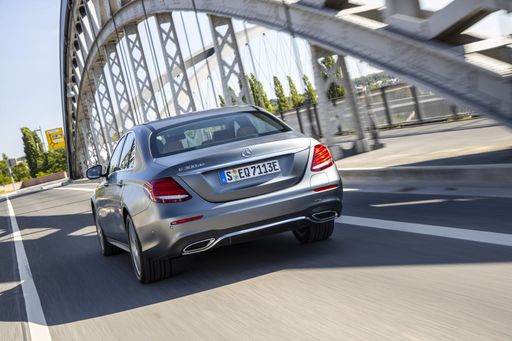 @ group-media.mercedes-benz.com
@ group-media.mercedes-benz.com
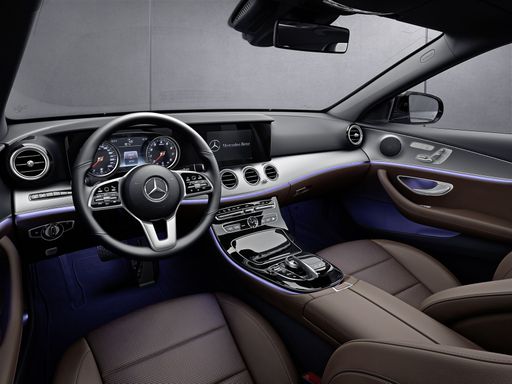 @ group-media.mercedes-benz.com
@ group-media.mercedes-benz.com
Volvo V60
The Volvo V60 exudes a sense of refined elegance with its sleek design and smooth contours, making it a standout in the estate car category. Inside, it offers a harmonious blend of luxury and functionality with premium materials and state-of-the-art technology, ensuring a comfortable driving experience. Its performance on the road is impressive, combining efficient handling with a powerful yet quiet ride, making it a favourite for those who appreciate both style and substance.
details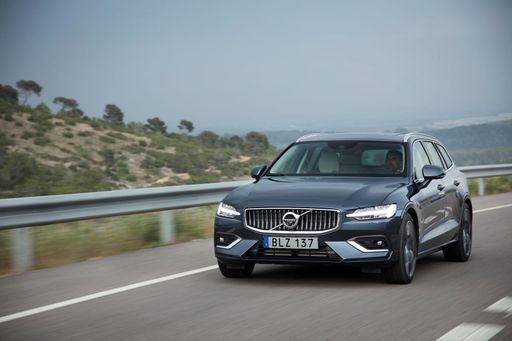 @ media.volvocars.com
@ media.volvocars.com
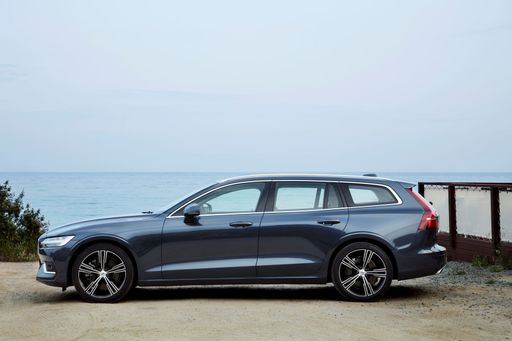 @ media.volvocars.com
@ media.volvocars.com
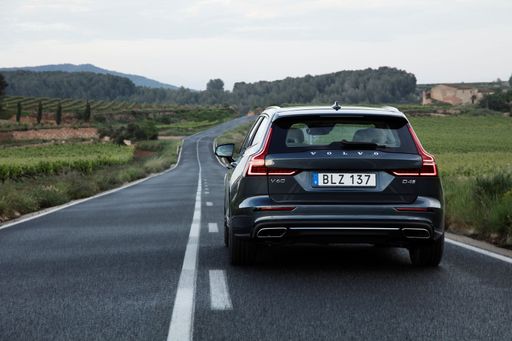 @ media.volvocars.com
@ media.volvocars.com
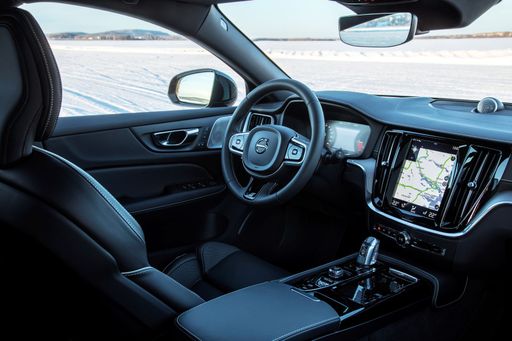 @ media.volvocars.com
@ media.volvocars.com
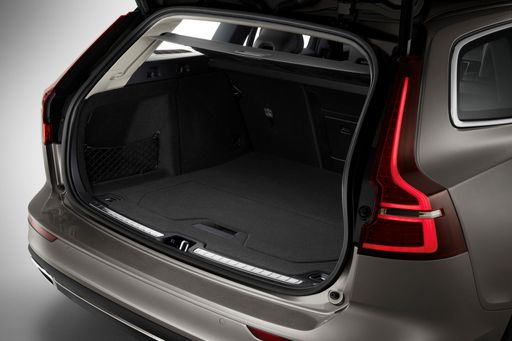 @ media.volvocars.com
@ media.volvocars.com

|

|
|
|
|
Costs and Consumption |
|
|---|---|
|
Price
50500 - 119700 £
|
Price
41600 - 64200 £
|
|
Consumption L/100km
1.5 - 7.5 L
|
Consumption L/100km
2.4 - 6.2 L
|
|
Consumption kWh/100km
-
|
Consumption kWh/100km
-
|
|
Electric Range
101 - 116 km
|
Electric Range
92 km
|
|
Battery Capacity
21.20 kWh
|
Battery Capacity
14.70 kWh
|
|
co2
39 - 172 g/km
|
co2
54 - 140 g/km
|
|
Fuel tank capacity
50 - 66 L
|
Fuel tank capacity
60 L
|
Dimensions and Body |
|
|---|---|
|
Body Type
Sedan
|
Body Type
Estate
|
|
Seats
5
|
Seats
5
|
|
Doors
4
|
Doors
5
|
|
Curb weight
1810 - 2390 kg
|
Curb weight
1734 - 2064 kg
|
|
Trunk capacity
370 - 540 L
|
Trunk capacity
519 L
|
|
Length
4949 - 4959 mm
|
Length
4778 mm
|
|
Width
1880 mm
|
Width
1850 mm
|
|
Height
1468 - 1480 mm
|
Height
1432 mm
|
|
Max trunk capacity
-
|
Max trunk capacity
1431 L
|
|
Payload
530 - 640 kg
|
Payload
466 - 506 kg
|
Engine and Performance |
|
|---|---|
|
Engine Type
Petrol MHEV, Plugin Hybrid, Diesel MHEV
|
Engine Type
Petrol MHEV, Plugin Hybrid
|
|
Transmission
Automatic
|
Transmission
Automatic
|
|
Transmission Detail
Automatic Gearbox
|
Transmission Detail
Dual-Clutch Automatic, Automatic Gearbox
|
|
Drive Type
Rear-Wheel Drive, All-Wheel Drive
|
Drive Type
Front-Wheel Drive, All-Wheel Drive
|
|
Power HP
186 - 585 HP
|
Power HP
197 - 455 HP
|
|
Acceleration 0-100km/h
4 - 8.5 s
|
Acceleration 0-100km/h
4.6 - 7.6 s
|
|
Max Speed
222 - 250 km/h
|
Max Speed
180 km/h
|
|
Torque
320 - 750 Nm
|
Torque
300 - 709 Nm
|
|
Number of Cylinders
4 - 6
|
Number of Cylinders
4
|
|
Power kW
137 - 430 kW
|
Power kW
145 - 335 kW
|
|
Engine capacity
1993 - 2999 cm3
|
Engine capacity
1969 cm3
|
General |
|
|---|---|
|
Model Year
2024 - 2025
|
Model Year
2024 - 2025
|
|
CO2 Efficiency Class
E, F, B, D
|
CO2 Efficiency Class
E, B
|
|
Brand
Mercedes-Benz
|
Brand
Volvo
|
Is the Mercedes E Class offered with different drivetrains?
The Mercedes E Class is offered with Rear-Wheel Drive or All-Wheel Drive.
The prices and data displayed are estimates based on German list prices and may vary by country. This information is not legally binding.
